Cabinet‑of‑Curiosities Shelves: How to Stage Small Art with Objects

The cabinet‑of‑curiosities look—think natural‑history prints, studio pottery, pressed botanicals, tiny portraits, shells, and objects with stories—has re‑entered the mainstream as a warm, personal counterpoint to sterile minimalism. In practice, it looks a lot like the recent “bookshelf wealth” wave, but with more art‑forward vignettes and specimen‑style groupings.
Below is a curator’s playbook to style shelves that feel collected, not cluttered: how to anchor with small framed art, mix objects by form, finish, and narrative, and keep everything readable with rhythm and negative space.
A 6‑Step Method (that scales from one shelf to a whole wall)
- Start with art, not objects. Place a small framed piece (8×10–11×14) slightly off‑center. Leaning is fine—designers even hang within the shelf stiles for depth.
- Build a “specimen story.” Add two objects that would plausibly share the art’s world (e.g., a botanical print with a bud vase and a vintage field box; a maritime etching with a small coil of rope and a brass compass).
- Use the 3‑5‑7 rule. Groupings of odd numbers read intentional. Start at 3 items per vignette and, on a larger bay, push to 5 or 7 distributed across height tiers.
- Stack books horizontally to set micro‑pedestals that vary height and give small art an easy lean.
- Paint with “color bands.” Limit each bay to two neutrals + one hue (example: wood + linen + moss green). Repeat that hue two or three times in different materials.
- Reserve negative space. Intentionally leave one gap per bay. It’s where the eye rests—and what separates a collection from clutter.
- Frame sizes: 8×10″–11×14″ per bay; 12×16″ if shelves are 14–15″ tall.
- Lean angle: 3–7°; a slim stand or a book stack keeps prints steady.
- Heights: vary by thirds—low (books), mid (object), high (art). Avoid three items all the same height.
Visual Examples & Moves to Steal
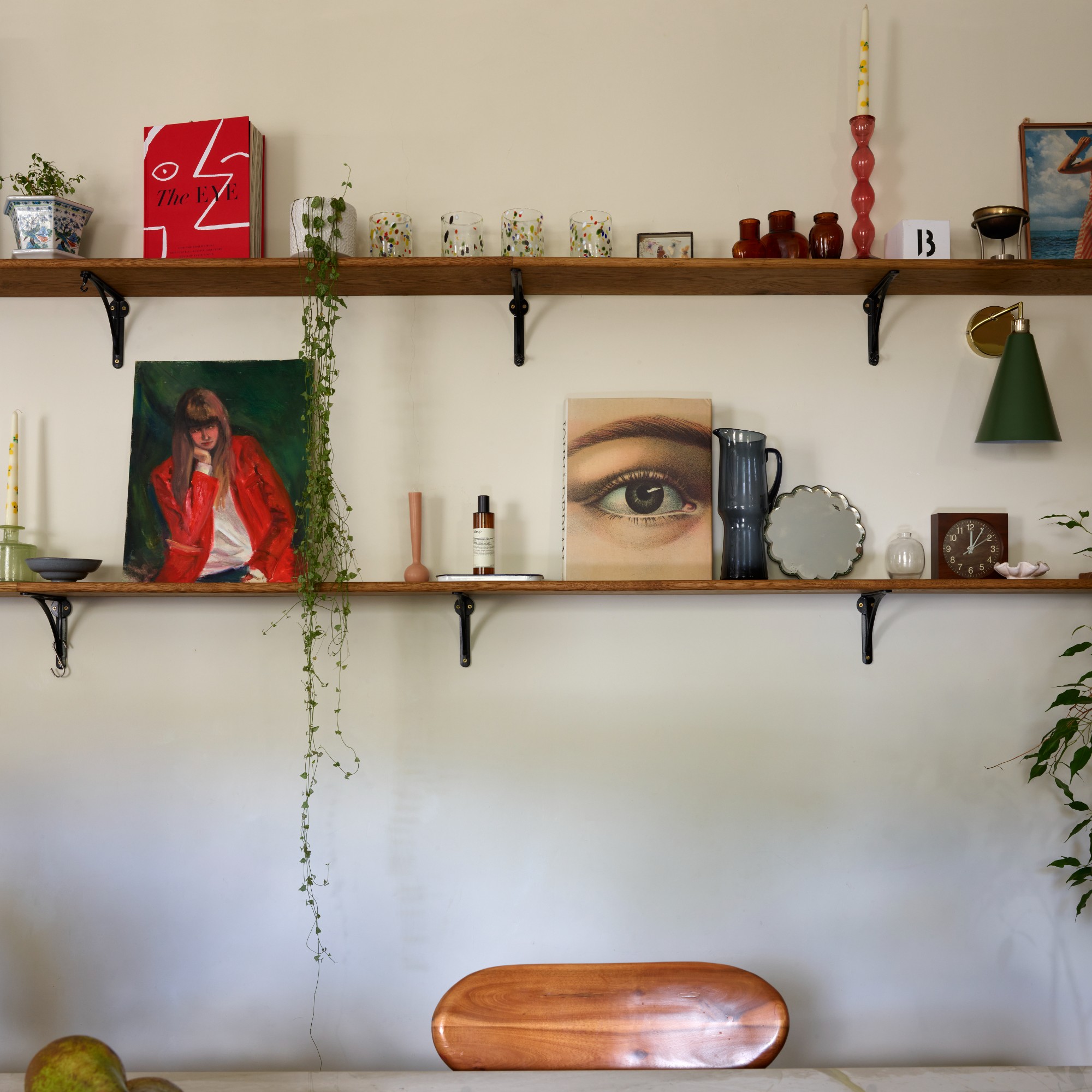
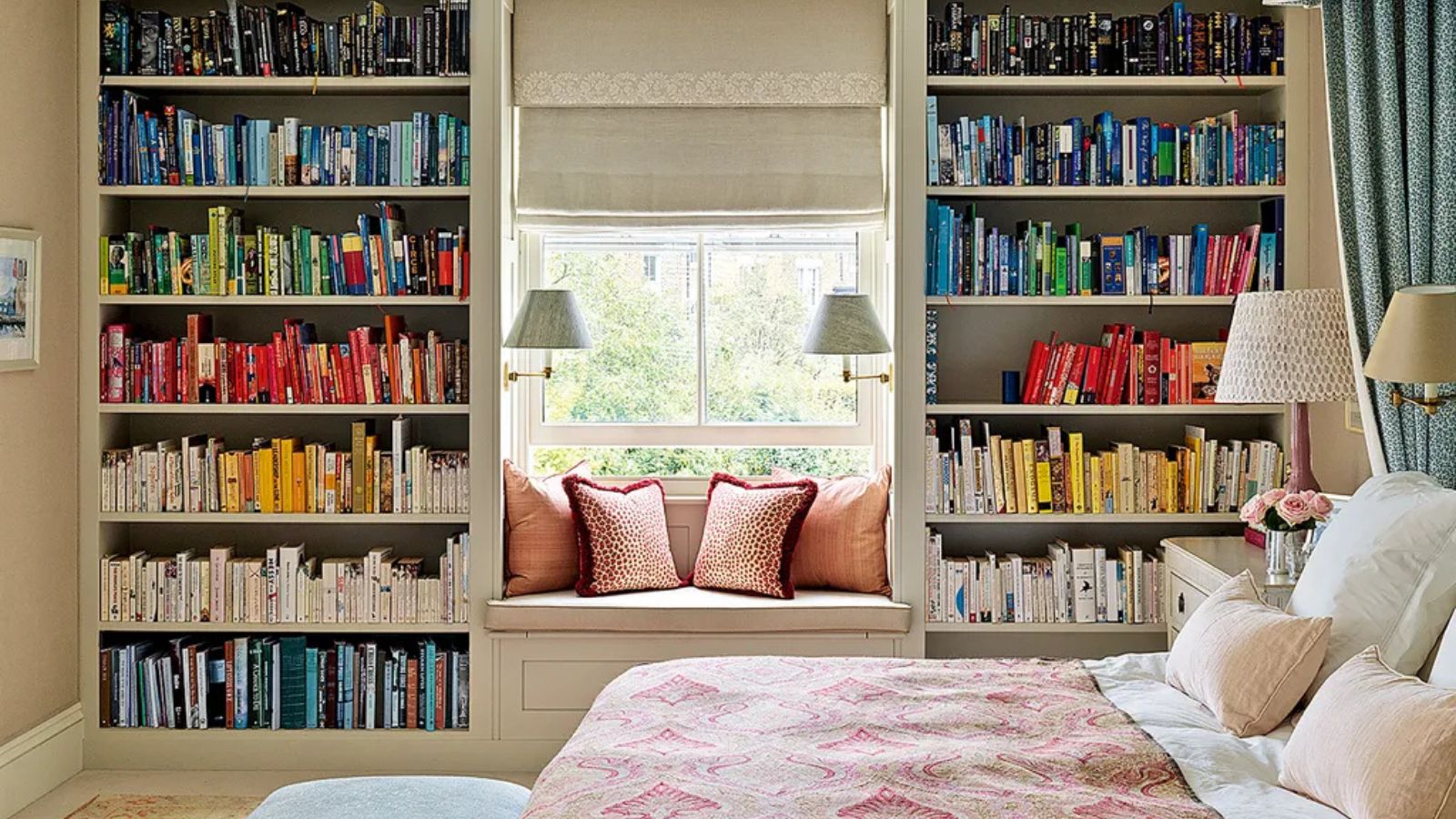
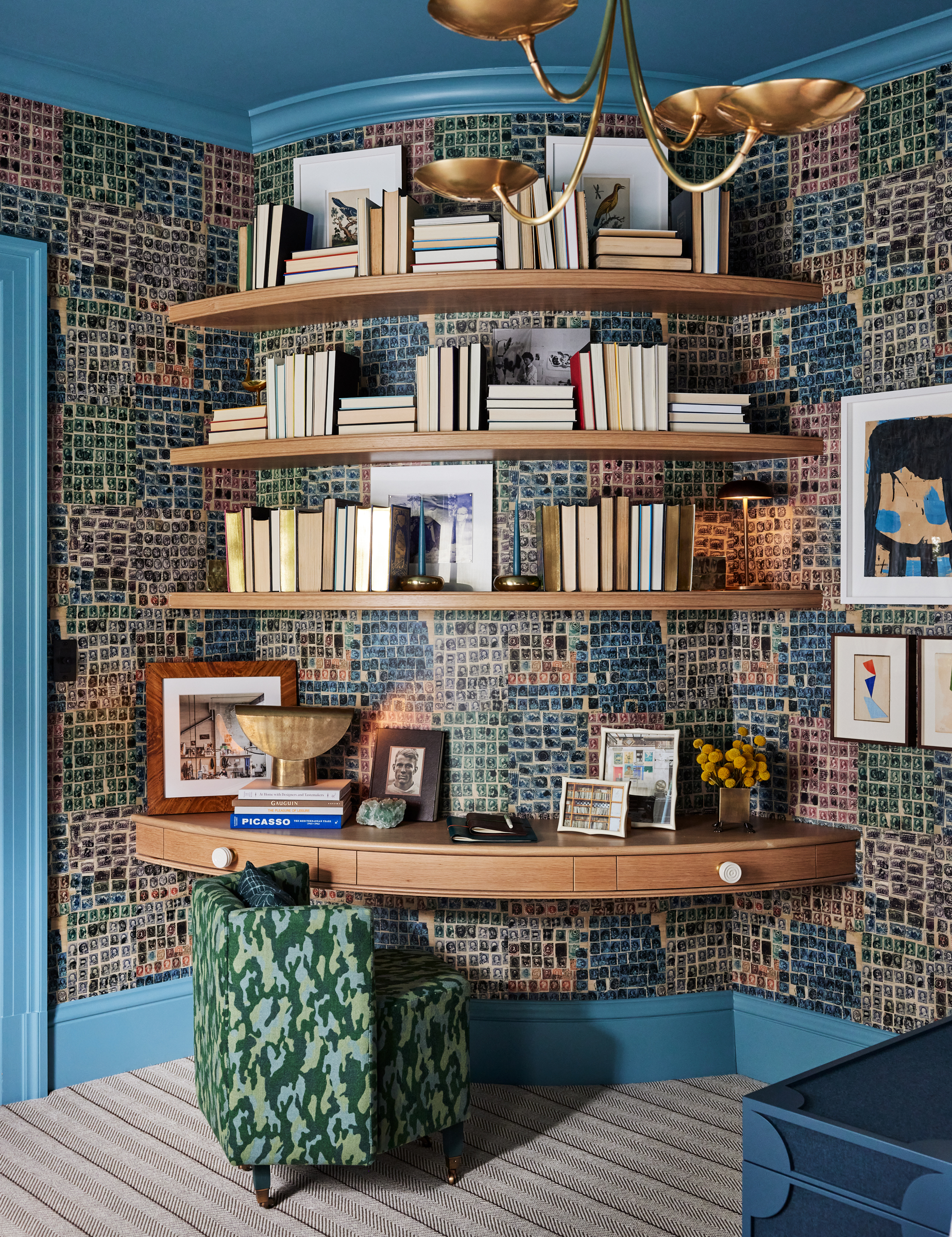
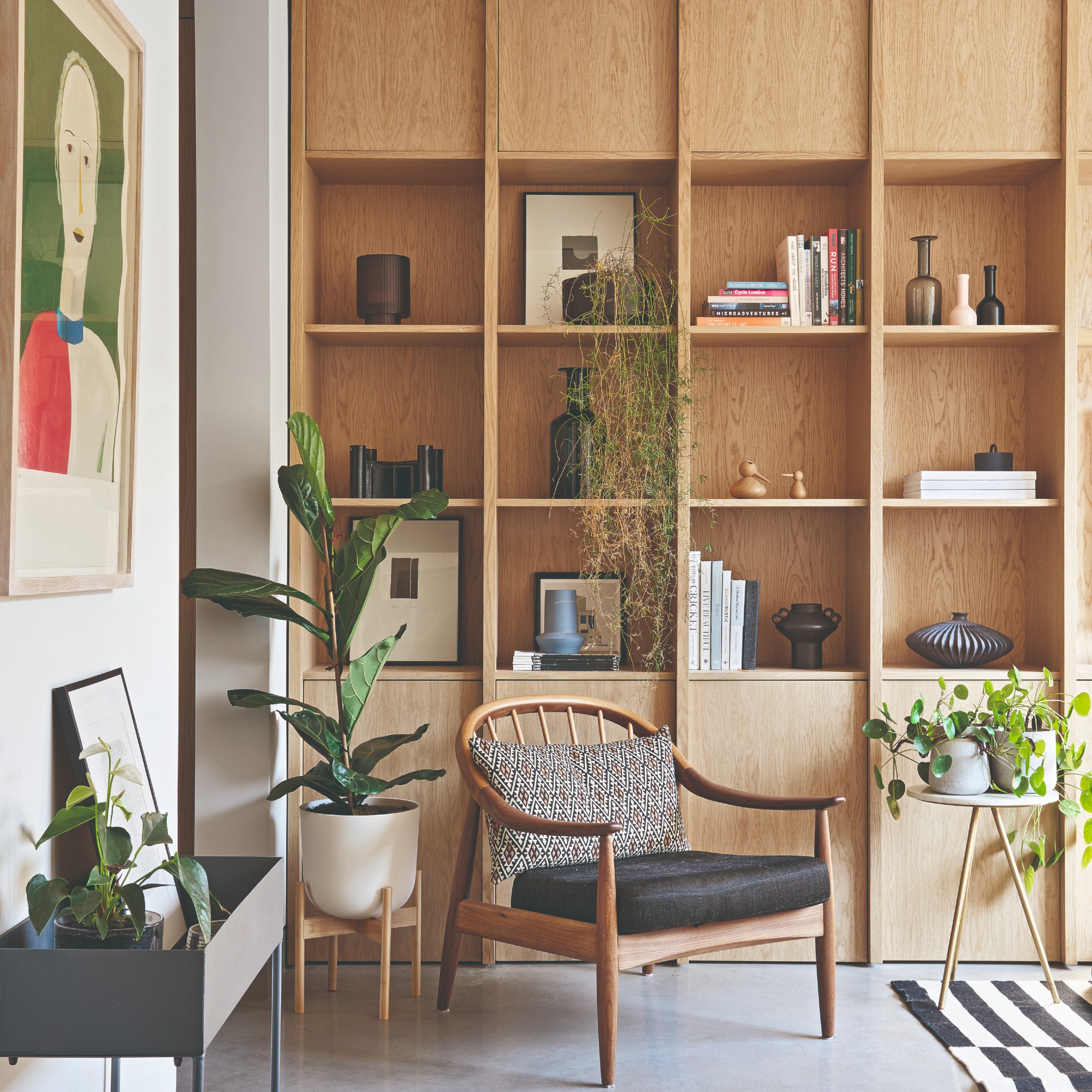
Trend context: In 2025, editors and designers noted a comeback of cabinets of curiosities and a maturing of “bookshelf wealth”—less matchy, more story‑driven, with small art layered into everyday shelves.
Quick Recipes for Cabinet‑of‑Curiosities Vignettes
- “Field Study” shelf: small botanical print + bud vase (single stem) + vintage tape measure + 2–3 stacked field guides.
- “Sea Desk” shelf: coastal etching or reef map + small coil of rope + shell under a cloche + brass compass.
- “Studio Tools” shelf: miniature abstract on panel + brush jar + stone paperweight + a folded linen.
Related on our blog: seasonal palettes and motifs are leaning expressive this winter. See our brief on Etsy’s Fall/Winter 2025 signals and translate them into shelf art and objects. Read the Artoholica Trend Report.
Placement Tips Designers Swear By
- Mix hanging + leaning. Pin a tiny frame to the shelf stile, then lean another in front—instant depth.
- Use trays and boxes. A low tray gathers smalls (magnifier, glasses, fossils) so they read as one unit.
- Add one living thing per column. A trailing vine or a small mound of moss breaks up hard edges.
- Mind sightlines. From across the room, you should read big shapes: rectangles (frames), cylinders (vases), circles (bowls).
Further Reading
FAQ — Cabinet‑of‑Curiosities Shelves
- How do I keep a curiosities shelf from feeling messy?
- Cap each bay at one framed piece + two supporting objects and preserve 30–40% empty space. Repeat one color note to connect everything.
- What sizes of art work best on shelves?
- Use 8×10″–11×14″ frames for standard bays; go to 12×16″ if shelf height allows. Lean smaller pieces in front of larger ones for dimension.
- Can I mix real antiques with new prints?
- Yes—just match finishes and scale. If your frame is light oak, echo that tone in a box or vase. Keep objects within a similar visual weight.
- How many books vs. objects?
- Think 60/40 books to objects for everyday shelves. Add a leaned print to each bay to anchor the story visually.
- What about color?
- Limit to two neutrals + one hue per bay (e.g., oak + linen + moss). If you color‑code books, keep the art in the same band for cohesion.

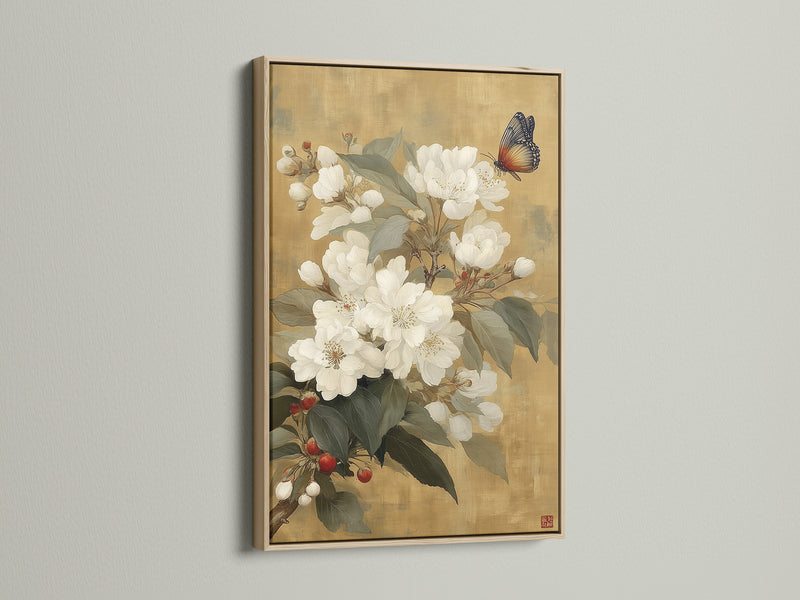








0 comments